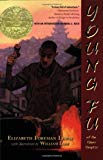
Young Fu of the Upper Yangtze touches on any number of historical and cultural aspects of China. It takes place in Chungking, at that time the largest city in Szechuan (Sichuan) province, and one of the largest cities in China. (In modern times, Chongqing is its own political entity and not part of Sichuan.)
The historical period depicted, the 1920s, was a turbulent period in China, a time of technological and political change, aspects which are all touched on to varying degrees. Indeed, one who knows Chinese history can find starting points for many discussions, including the opening of city walls, the rise of modern machinery, modern technology and modern medicine, the warlords (known as Tuchun— pronounced "doojün"), the western gun boats, opium and the First and Second Opium War, Sun Yat-sen, the Chinese Nationalist and Chinese Communist forces, the influence of Western foreigners, etc. Since this is a book for children, historical events are mainly just touched on rather than described in detail, so as not to slow down the plot.
Similarly, there are starting points for many discussions about the Chinese culture of the time, including the use of "Young" and "Old" in names and how names are formed, the nature and role of Written Chinese, the social status of the scholar, Buddhism and the veneration of Guanyin, many common Chinese words and phrases (sometimes presented in English translation), the often-Four-character Chinese proverbs, traditional social roles of men and women, New Year and Spring Festival, the prejudice of city folk towards country folk, traditional clothing (including silk), the queue (hairstyle) and foot binding, the social status of soldiers, the role of artisan guilds and other guilds, sedan chairs, weddings and the role of women, story tellers, the role of shame (vs. guilt), the abacus, veneration of ancestors, the traditional humility in interpersonal relationships, the tea house, the coolie, the construction of houses and tenements, traditional medicine, the use of chopsticks and rice in meals, gambling games, bargaining, thriftiness, the kitchen god, the use of animals to name points in time, etc.
Already have an account? Log In Now